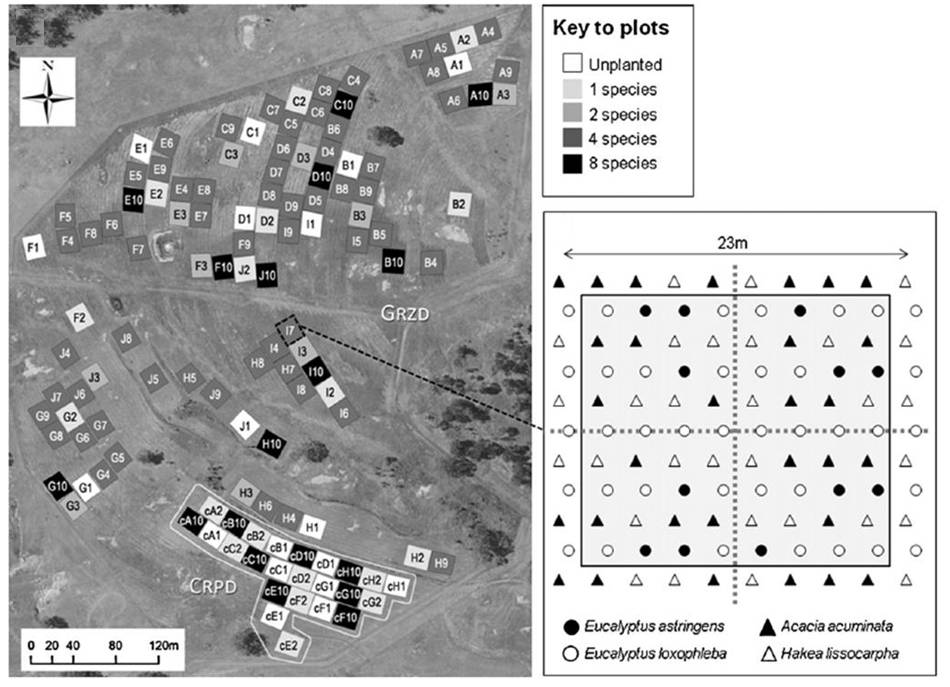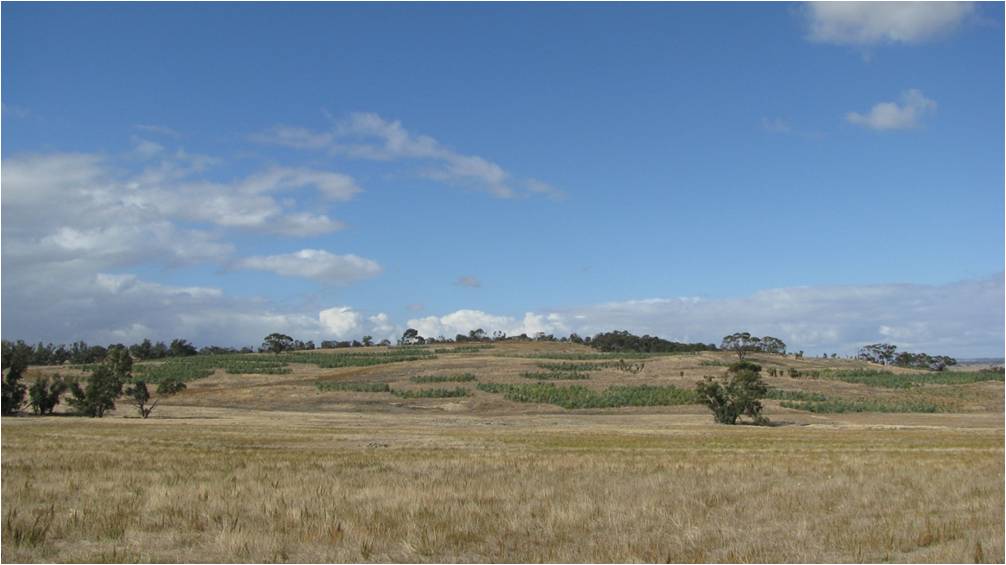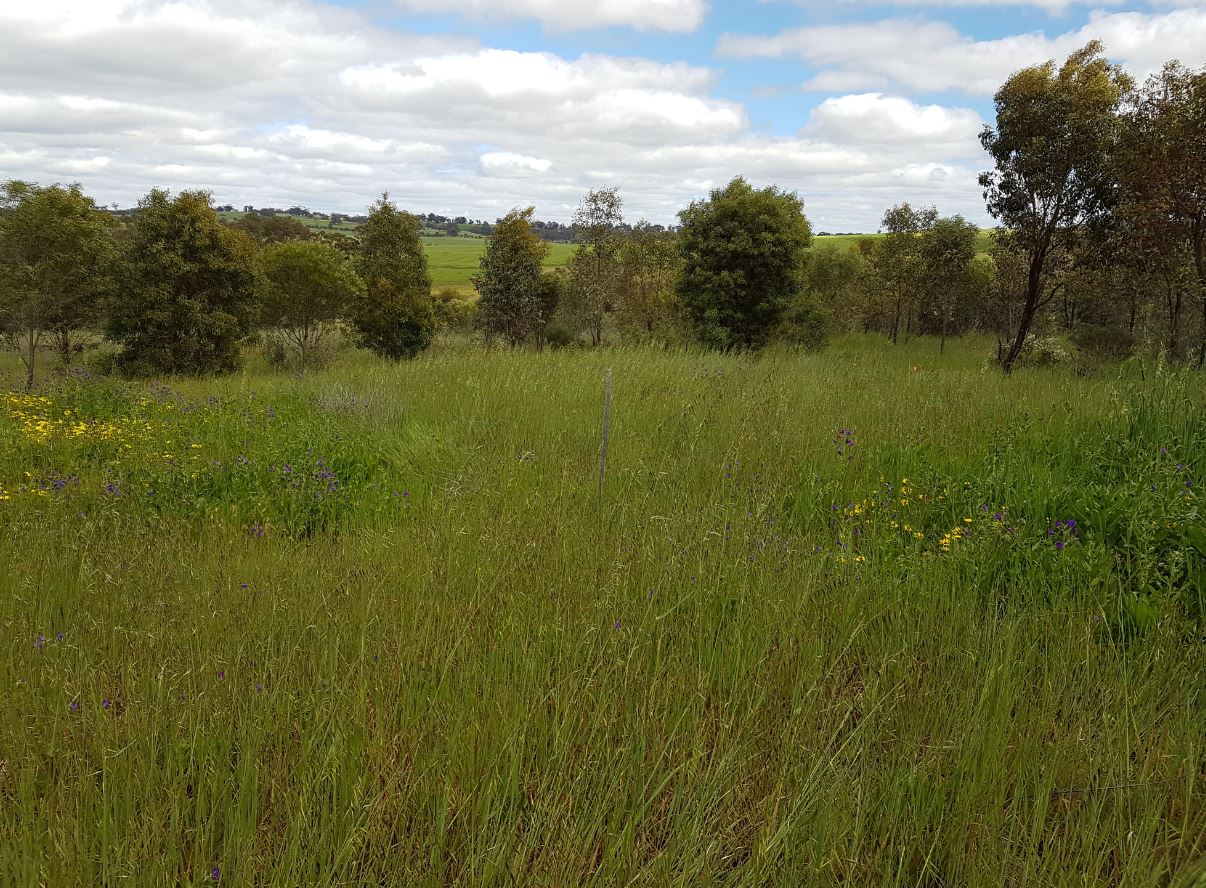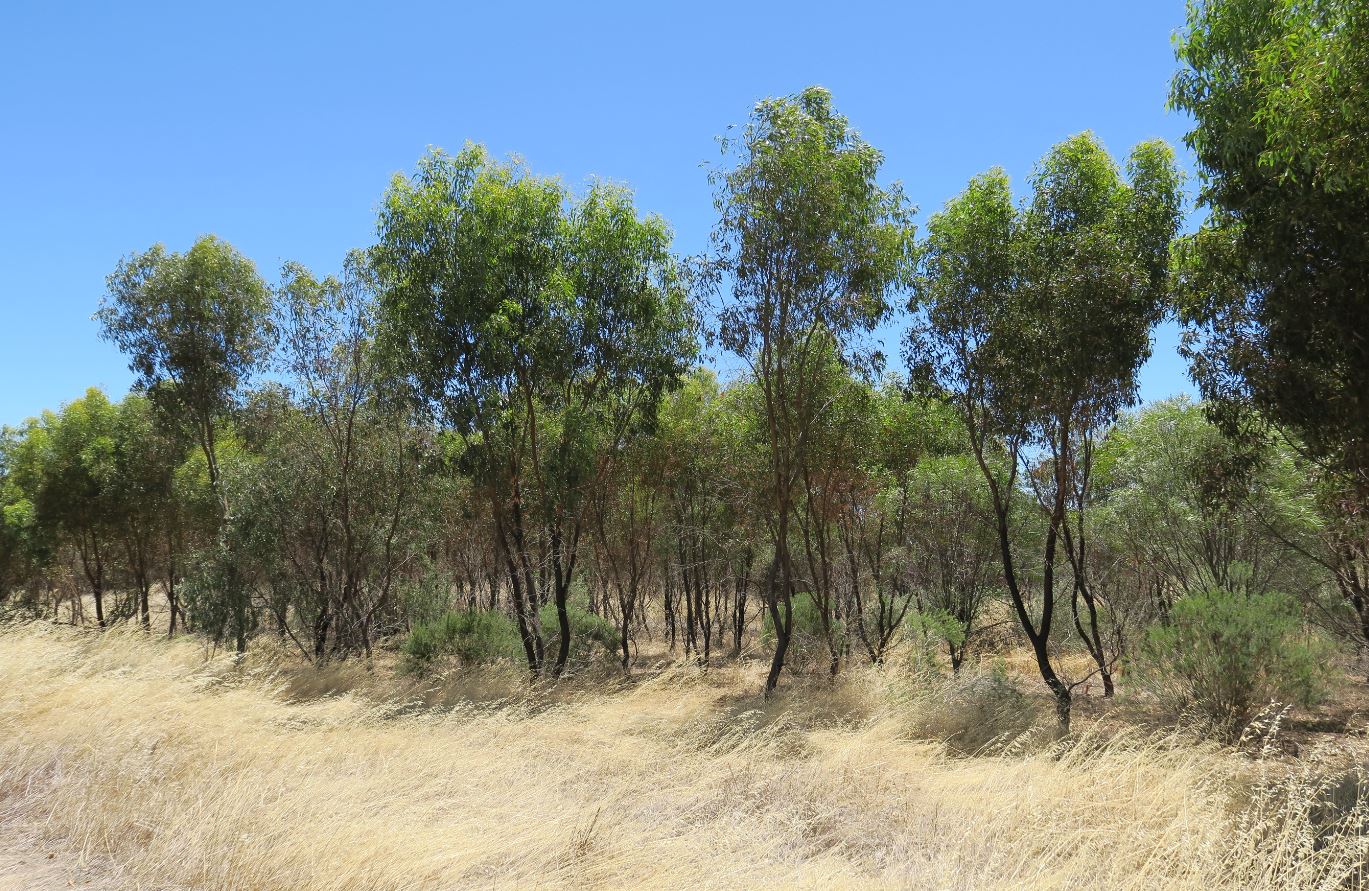Ridgefield (Australia)
The Ridgefield Multiple Ecosystem Services Experiment was established in 2010 to explore the provision of ecosystem services by different plant species in the context of restoration and global change in the wheat belt of south-western Australia. The focus of the experiment lies on a number of ecosystem attributes and processes, including those likely to be valued as services by land managers as well as the broader public.
Design
Ten different plant assemblage treatments are used in the plots. The treatments form a gradient of species richness, functional group richness, and structural complexity. Species were selected based on their nutrient acquisition traits and morphological traits such as growth form: trees, fabaceous shrubs, myrtaceous shrubs, and proteaceous shrubs. Bare plots are included to examine the changes that will occur in the absence of deliberate planting. The plots are blocked according to soil type, aspect, and soil moisture.
Two environmental changes will be manipulated experimentally at the site: N deposition and non-native weed cover. Half of each plot is subjected to N deposition, with weed removal (by herbicide application) nested in quarter plots within these halves. Weed removal was done until the end of 2015. Measurements will take place on, or in the area enclosed by, the 16 individuals within each quarter.
The species are arranged in a stratified random way in the plots, to maintain composition within each plot quarter. Shrubs and trees were planted on alternate rows c. 2 m apart, with 2.5 m between the individuals in the rows: 10 trees per line in each plot. The outer rows of a plot always have shrubs, apart from the bare and tree-only plots. The border trees/shrubs will be excluded from measurements.

|
| The plots of the Ridgefield Multiple Ecosystem Services Experiment and an example plot layout. Former land use: crops (CRPD) or sheep grazing (GRZD). Capital letters denote blocks; numbers denote the 10 different plant assemblage treatments. |
Site characteristics
| location | Ridgefield |
|---|---|
| former land use | crops (24 plots), sheep pasture (100 plots) |
| altitude | 350 m |
| soil type | |
| area | 21 ha |
| no of plots | 124 |
| plot size | 11 rip lines by 23 m: c. 21 m x 23 m |
| no of trees planted | 11 660 |
| planting date | 14-16 August 2010 |
| diversity variables | species richness functional diversity structural complexity |
| diversity gradient | 0, 1, 2, 4, 8 sp. 0, 1, 2, 3, 4 FD levels 0, 1, 2 growth forms |
| size species pool | 8 |
| species pool | tree species: Eucalyptus loxophleba, E. astringens shrub species: Acacia acuminata, A. microbotrya, Banksia sessilis, Callistemon phoeniceus, Calothamnus quadrifidus, Hakea lissocarpha |
| contact person | Mike Perring, Rachel Standish |
Research
In the first stages of the experiment, studies will focus on C sequestration, biotic resistance, nutrient cycling, soil erosion control, biodiversity maintenance, and pollination.
Extra information
Send an e-mail to the contact persons, visit the experiment's own website, or explore the publications:
theses
papers
 |
 |
| The Ridgefield Multiple Ecosystem Services Experiment in 2012 and 2013 (Click on the pictures to see a larger version.) |
|
 |
 |
| The Ridgefield Experiment in spring 2016 (Bec Campbell) and in 2018 (R. Hobbs) | |
